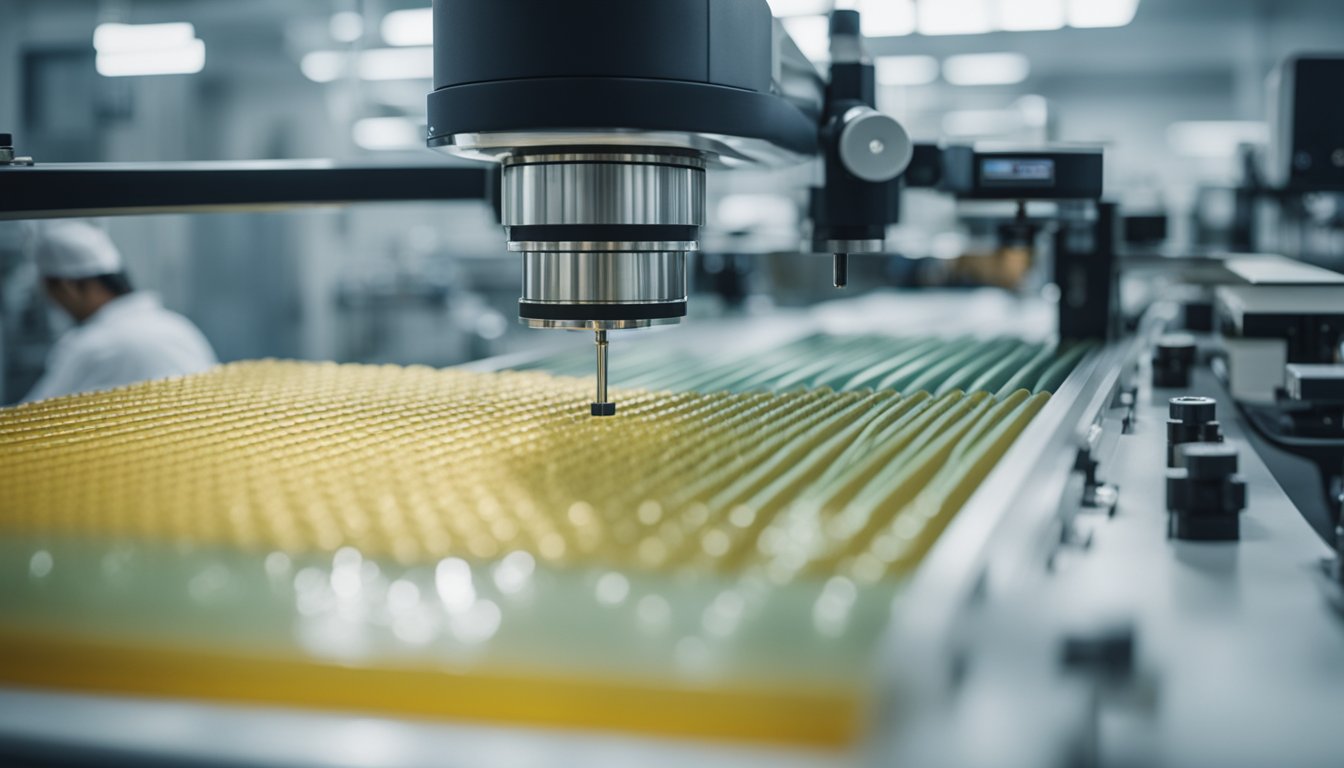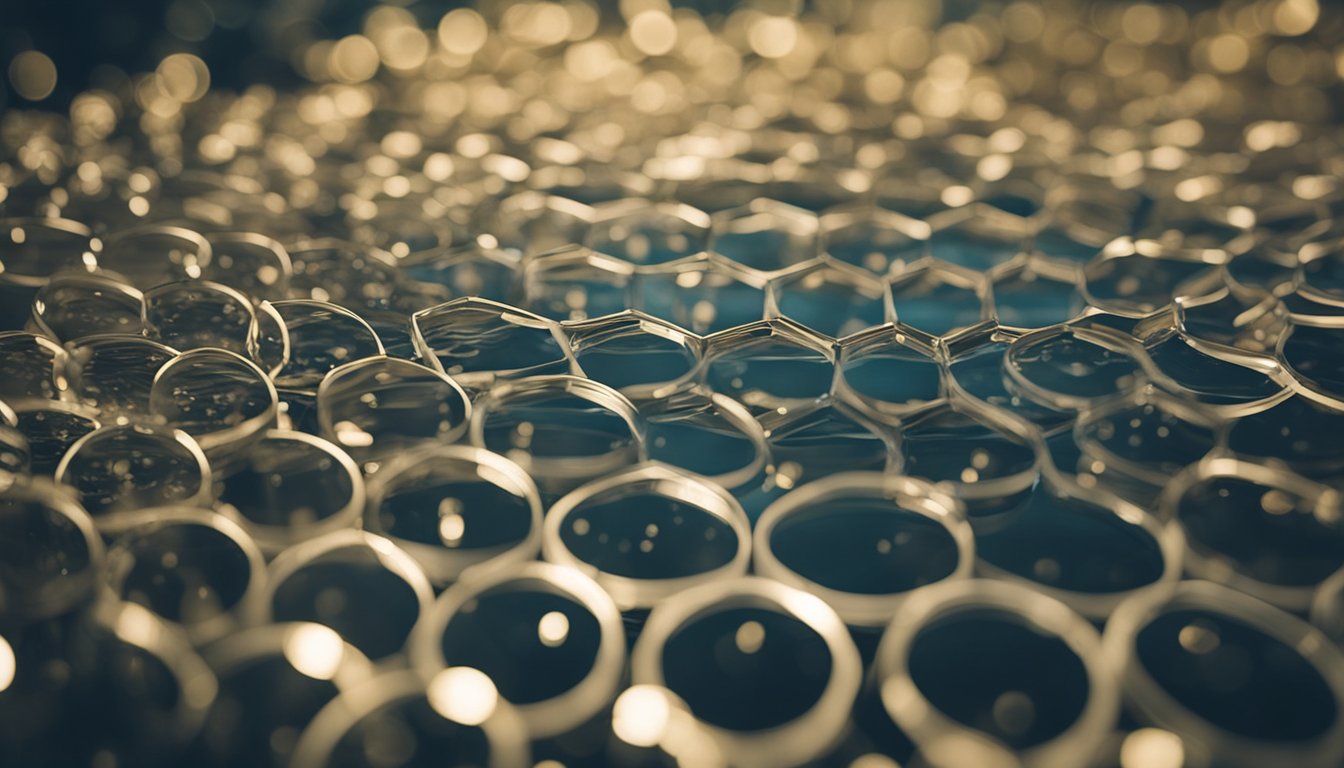Contact
Write to Us And We Would Be Happy to Advise You.
Do you have any questions, or would you like to speak directly with a representative?
By peter
Custom Membrane Manufacturing has revolutionized the way we interact with electronic devices. Membrane switches, keypads, and touchscreens are ubiquitous in modern life, from our smartphones to our cars to our kitchen appliances. But what exactly is a custom membrane, and how does it work?

At its most basic level, a custom membrane is a thin, flexible layer that serves as an interface between a user and an electronic device. It can be made from a variety of materials, including polyester, polycarbonate, and silicone, and can be customized to fit virtually any shape or size. When a user presses on the membrane, it activates a switch or sensor that sends a signal to the device, allowing it to perform a specific function.
Custom membrane technology has a wide range of applications, from medical devices to industrial equipment to consumer electronics. In the medical field, for example, custom membranes can be used to create sterile, waterproof interfaces for surgical instruments or to monitor vital signs in patients. In the industrial sector, custom membranes can be used to control machinery or to provide user interfaces for complex systems. And in consumer electronics, custom membranes are used in everything from remote controls to smart home devices to wearable technology.

Custom membrane technology involves the design and production of membranes tailored to specific applications. These membranes can be made from a variety of materials, including polymers, ceramics, and metals. The choice of materials depends on the intended use of the membrane, as well as the desired properties such as selectivity, permeability, and durability.
Polymeric membranes are the most commonly used in custom membrane technology due to their versatility and ease of fabrication. They can be made from a range of synthetic and natural polymers, including polyethersulfone (PES), polyamide (PA), polyvinylidene fluoride (PVDF), and cellulose acetate (CA). These materials can be combined to form composite membranes with enhanced properties, such as increased selectivity or flux.
Ceramic membranes are another option for custom membrane fabrication, particularly for high-temperature and corrosive environments. They are made from inorganic materials such as alumina, zirconia, and titania, and can be fabricated using techniques such as sol-gel, tape casting, and electrospinning. Ceramic membranes offer excellent chemical and thermal stability, as well as high selectivity and flux.
Metal membranes are less common in custom membrane technology but can be useful for applications requiring high strength and durability. They are typically made from stainless steel or titanium and can be fabricated using techniques such as sputtering and electroplating. Metal membranes offer high mechanical strength and resistance to corrosion, but can be expensive and difficult to fabricate.
Custom membranes can be fabricated using a range of techniques, including phase inversion, electrospinning, and molecular layer deposition. Phase inversion is the most common method for fabricating polymeric membranes, involving the dissolution of a polymer in a solvent followed by the formation of a membrane through phase separation. Electrospinning is another method for fabricating polymeric membranes, involving the use of an electric field to spin a polymer solution into a fibrous membrane. Molecular layer deposition is a newer technique for fabricating thin-film membranes, involving the sequential deposition of molecular layers onto a substrate.
In conclusion, custom membrane technology offers a flexible and versatile approach to membrane fabrication, allowing for the design of membranes tailored to specific applications. The choice of materials and fabrication methods depends on the intended use of the membrane, as well as the desired properties such as selectivity, permeability, and durability.

Custom membranes have a wide range of applications across various industries. These membranes can be tailored to meet specific requirements, making them ideal for use in a variety of applications. Here are some of the most common applications of custom membranes:
Custom membranes are extensively used in water treatment applications. They can be used to remove impurities and contaminants from water, making it safe for human consumption. Custom membranes can be designed to remove specific contaminants, such as heavy metals, bacteria, and viruses. They are also used in desalination processes to remove salt and other minerals from seawater.
Custom membranes are also used in gas separation applications. They can be designed to selectively allow certain gases to pass through while blocking others. This makes them ideal for use in the production of industrial gases, such as nitrogen and oxygen. Custom membranes can also be used in natural gas processing to remove impurities and separate different gases.
Custom membranes have a variety of biomedical applications. They can be used in drug delivery systems to control the release of drugs into the body. Custom membranes can also be used in artificial organs and tissue engineering applications. They can be designed to mimic the structure and function of natural tissues, making them ideal for use in regenerative medicine.
Overall, custom membranes are highly versatile and can be tailored to meet specific requirements. They have a wide range of applications across various industries and are essential for many industrial processes.
When designing custom membranes, there are several key factors to consider. These include permeability and selectivity, mechanical strength, and chemical compatibility.
Permeability and selectivity are two of the most important characteristics to consider when designing custom membranes. Permeability refers to the rate at which molecules can pass through the membrane, while selectivity refers to the membrane’s ability to allow certain molecules to pass through while blocking others.
When designing a custom membrane, it is important to consider the specific application and the types of molecules that need to be separated or filtered. This will help determine the appropriate level of permeability and selectivity required for the membrane.
Mechanical strength is another important consideration when designing custom membranes. The membrane must be able to withstand the pressure and stress of the application without rupturing or degrading over time.
Factors that can impact the mechanical strength of a membrane include the thickness of the membrane, the material used to construct the membrane, and the manufacturing process used to create the membrane.
Finally, chemical compatibility is an important consideration when designing custom membranes. The membrane must be able to withstand exposure to the specific chemicals and substances that will be present in the application without degrading or reacting with the chemicals.
Factors that can impact chemical compatibility include the material used to construct the membrane, the manufacturing process used to create the membrane, and the specific chemicals and substances that will be present in the application.
Overall, when designing custom membranes, it is important to carefully consider the specific application and the requirements of the membrane. By taking into account factors such as permeability and selectivity, mechanical strength, and chemical compatibility, it is possible to create a membrane that is tailored to the specific needs of the application.
Custom membranes have become increasingly important in various industries, including water treatment, biopharmaceuticals, and food and beverage. The demand for custom membranes is driven by the need for high-quality and efficient separation processes, as well as the growing trend towards personalized solutions. In this section, we will explore the latest market trends in custom membrane development, including emerging technologies and industry demand.
In recent years, there have been significant advancements in custom membrane technologies. One of the most promising developments is the use of nanotechnology to create membranes with improved selectivity and permeability. These nanomaterials can be used to create custom membranes that are tailored to specific applications, such as water purification or gas separation.
Another emerging technology is the use of 3D printing to create custom membranes with complex geometries. This technology allows for the creation of membranes with precise pore sizes and shapes, which can improve separation efficiency and reduce energy consumption. Additionally, 3D printing can be used to create membranes with unique surface properties, such as hydrophilicity or hydrophobicity, to enhance their performance in specific applications.
The demand for custom membranes is driven by a variety of factors, including the need for more efficient separation processes, the growing demand for personalized solutions, and the increasing adoption of membrane-based technologies in various industries. In the water treatment industry, custom membranes are used to remove contaminants from wastewater and produce high-quality drinking water. In the biopharmaceutical industry, custom membranes are used for protein purification and other separation processes.
The food and beverage industry is also a significant market for custom membranes, with applications ranging from dairy processing to beer filtration. Custom membranes can improve the efficiency of these processes and help to maintain the quality and consistency of the final product. As the demand for high-quality and personalized products continues to grow, the market for custom membranes is expected to expand significantly in the coming years.
In conclusion, the market for custom membranes is rapidly evolving, with new technologies and applications emerging all the time. By staying up-to-date with the latest market trends, you can ensure that your business is well-positioned to take advantage of these opportunities and provide your customers with the best possible solutions.
When designing custom membranes, it is important to consider regulatory and environmental aspects. This includes compliance with standards and regulations, as well as sustainability and green chemistry.
Custom membranes must comply with various standards and regulations, such as those set by the International Organization for Standardization (ISO) and the American Society for Testing and Materials (ASTM). These standards ensure that the membranes are safe and effective for their intended use.
ISO 9001:2015, for example, outlines the requirements for a quality management system. Compliance with this standard ensures that the membrane manufacturing process is controlled and consistent, resulting in high-quality and reliable products.
ASTM D638-14 is another important standard for custom membrane manufacturing. This standard outlines the test method for tensile properties of plastics. Compliance with this standard ensures that the membrane has the required tensile strength and can withstand the stresses of its intended use.
Sustainability and green chemistry are becoming increasingly important in the membrane industry. Custom membrane manufacturers are seeking to reduce their environmental impact by using sustainable and renewable materials, as well as minimizing waste and energy usage.
One approach to sustainable membrane manufacturing is the use of green chemistry principles. This involves the design of chemical products and processes that reduce or eliminate the use and generation of hazardous substances. Green chemistry can lead to the development of safer and more sustainable membrane materials and manufacturing processes.
Another approach is the use of biodegradable and renewable materials in membrane production. For example, some custom membrane manufacturers are using cellulose-based materials instead of traditional petroleum-based polymers. This reduces the reliance on nonrenewable resources and reduces the environmental impact of the manufacturing process.
In conclusion, compliance with standards and regulations, as well as sustainability and green chemistry, are important considerations when designing custom membranes. By following these guidelines, manufacturers can ensure that their membranes are safe, effective, and environmentally friendly.
Do you have any questions, or would you like to speak directly with a representative?